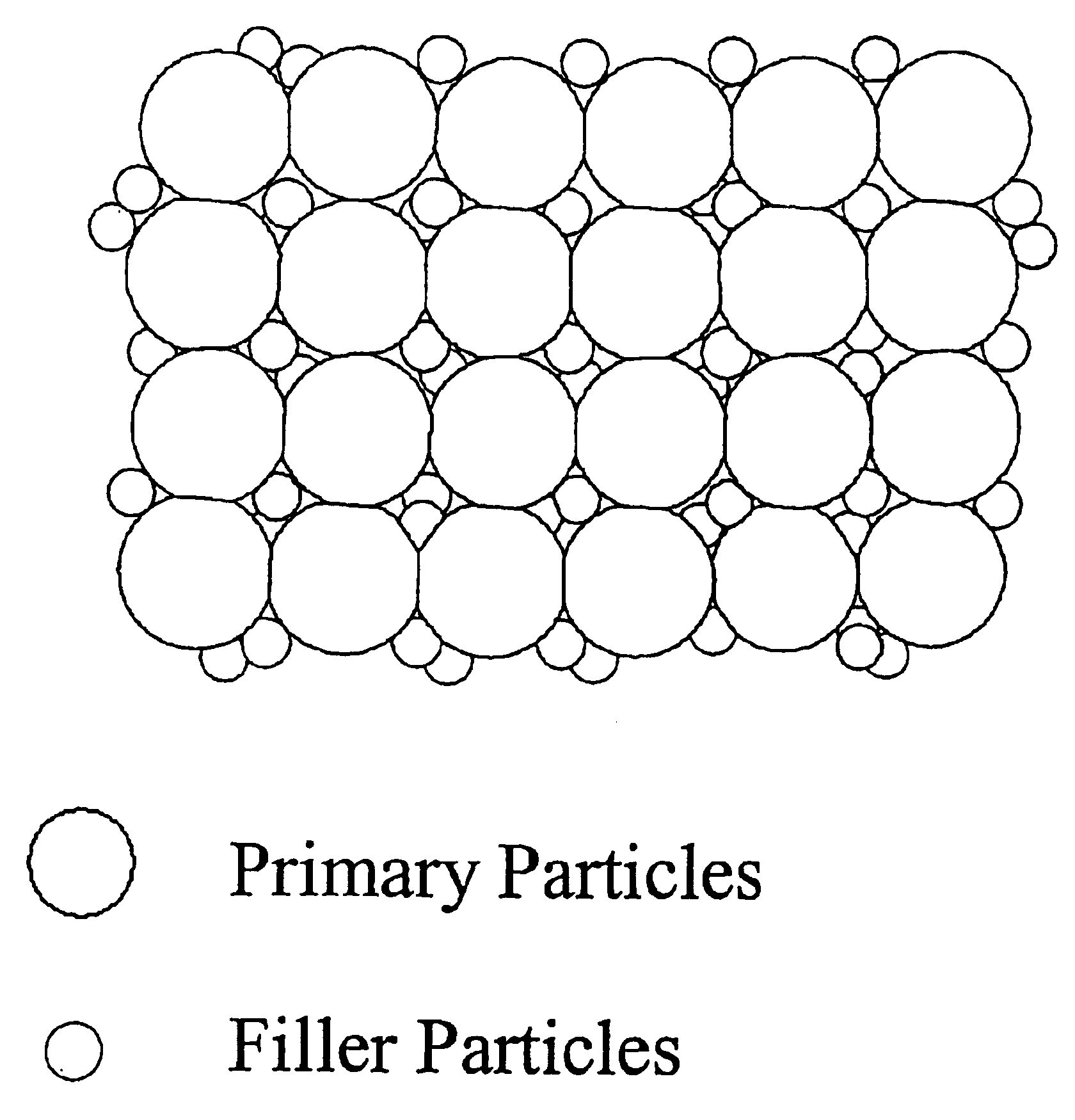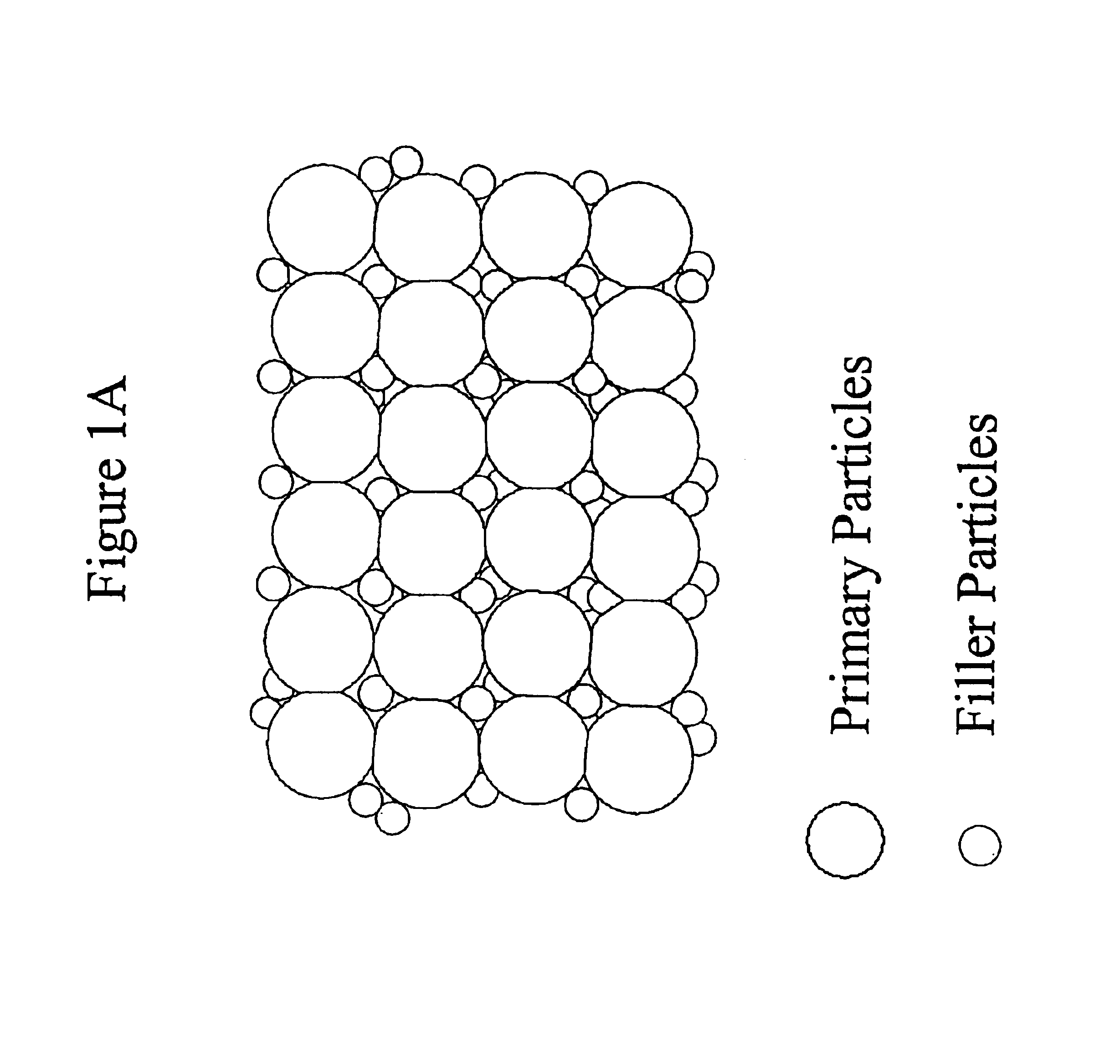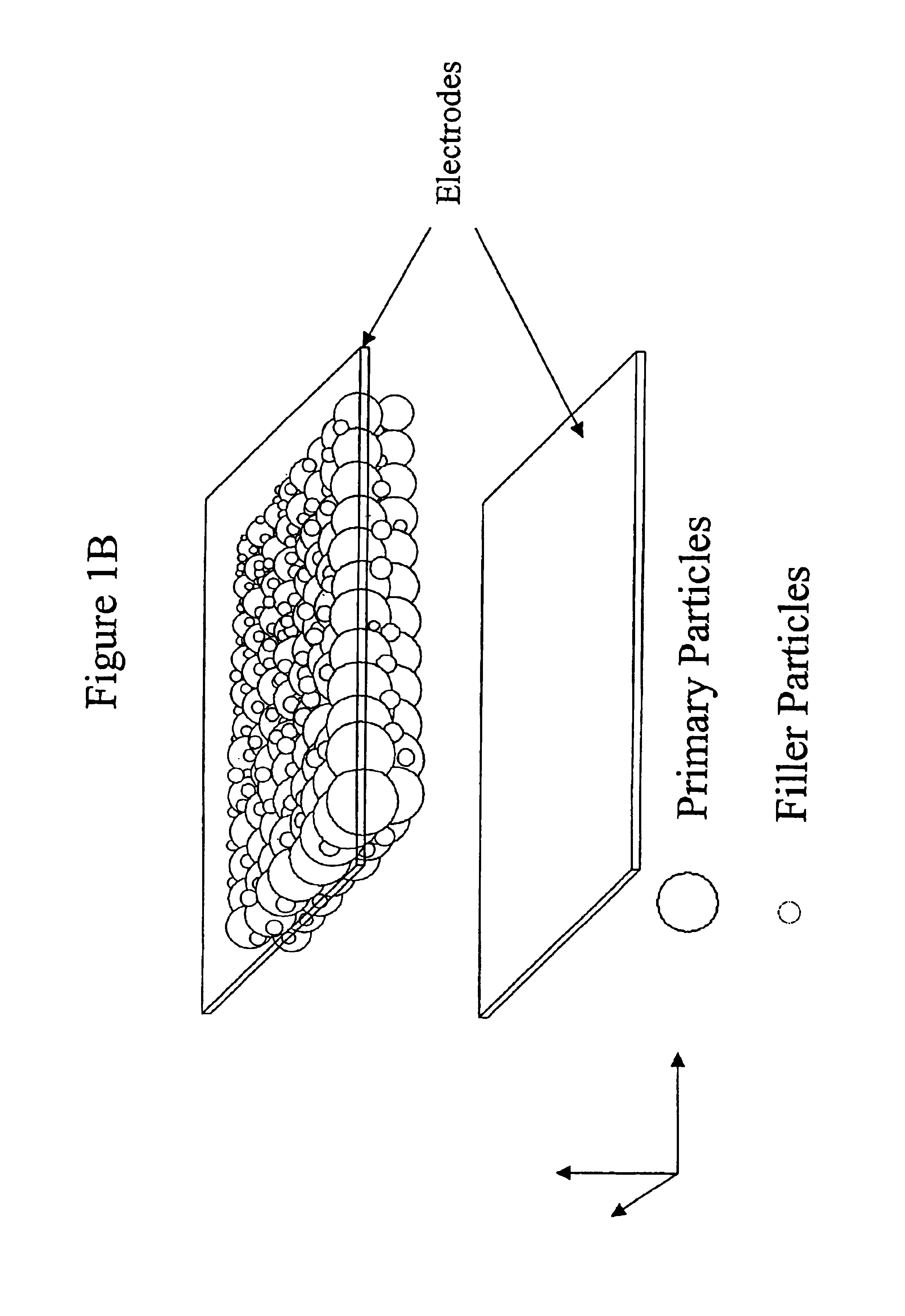Electrophoretic display with a bi-modal particle system
a particle system and electrophoretic technology, applied in the field of electrophoretic display, can solve the problems of inferior image bistability, image uniformity and colloidal stability, significant deterioration of dmin or % reflectance, etc., and achieve the effects of improving threshold characteristics, enhancing the density of primary particles, and improving the contrast ratio
- Summary
- Abstract
- Description
- Claims
- Application Information
AI Technical Summary
Benefits of technology
Problems solved by technology
Method used
Image
Examples
examples
[0043]The following examples are given to enable those skilled in the art to more clearly understand, and to practice, the present invention. They should not be considered as limiting the scope of the invention, but merely as being illustrative and representative thereof.
preparation 1
Synthesis of Perfluorinated Reactive Dispersant Rf amine 4900
[0044]
[0045]48 Gm of Krytox® methyl ester (DuPont, MW=about 4800, n=about 30) was dissolved in 100 gm of 1,1,2-trichlorotrifluoroethane (Aldrich). The resultant solution was added drop by drop into a solution containing 7.3 gm of tris(2-aminoethyl)amine (Aldrich) in 45 gm trifluorotoluene and 90 gm 1,1,2-trichlorotrifluoroethene over 2 hours with stirring at room temperature. The mixture was then stirred for another 8 hours to allow the reaction to complete. The IR spectrum of the crude product clearly indicated the disappearance of C═O vibration for methyl ester at 1780 cm−1 and the appearance of C═O vibration for the amide product at 1695 cm−1. Solvents were removed by rotary evaporation. The crude product was then dissolved in 250 ml of PFS2 solvent (perfluoropolyether from Solvay Solexis) and extracted with 100 ml of ethyl acetate three times, then dried over magnesium sulfate to yield 42 gm of purified product (Rf ami...
preparation 2
Synthesis of a Reactive Fluorinated Pyridinium Salt
[0047]
[0048]3.21 Gm (30.0 mmol) of 2,6-lutidine (Aldrich) and 11.6 gm (25.0 mmol) of 1H, 1H, 2H, 2H-perfluorodecanol [CF3(CF2)nCH2CH2OH, n=7] were dissolved in 150 ml of chloroform in a flask and cooled in a 0° C. bath. To the solution, 8.5 gm (30.0 mmol) of trifluoromethanesulfonic anhydride pre-dissolved in 100 ml of chloroform was added drop-wise with stirring over a period of 30 minutes. The mixture was stirred for at least another 8 hours at room temperature to allow the reaction to complete. The reaction mixture was washed with deionized water three times, dried over magnesium sulfate and the solvent was stripped off. The crude product was recrystallized from heptane / methylene chloride and rinsed with heptane. 12.45 Gm (yield: 83.6%) of a white crystal (1H,1H, 2H, 2H-perfluorodecyl triflate, CF3(CF2)nCH2CH2OSO2CF3, n=7) was obtained.
[0049]5.96 Gm (10 mmol) of the thus obtained 1H, 1H, 2H, 2H-perfluorodecyl triflate was added i...
PUM
| Property | Measurement | Unit |
|---|---|---|
| diameter | aaaaa | aaaaa |
| diameter | aaaaa | aaaaa |
| diameter | aaaaa | aaaaa |
Abstract
Description
Claims
Application Information
 Login to View More
Login to View More - R&D
- Intellectual Property
- Life Sciences
- Materials
- Tech Scout
- Unparalleled Data Quality
- Higher Quality Content
- 60% Fewer Hallucinations
Browse by: Latest US Patents, China's latest patents, Technical Efficacy Thesaurus, Application Domain, Technology Topic, Popular Technical Reports.
© 2025 PatSnap. All rights reserved.Legal|Privacy policy|Modern Slavery Act Transparency Statement|Sitemap|About US| Contact US: help@patsnap.com



